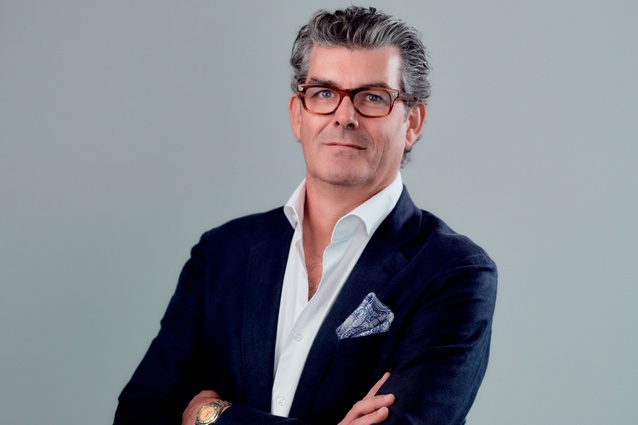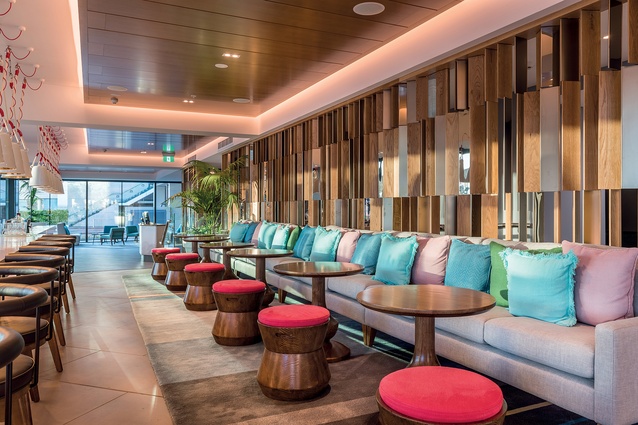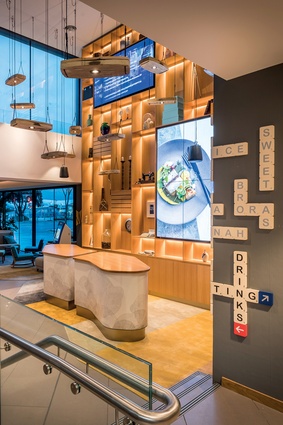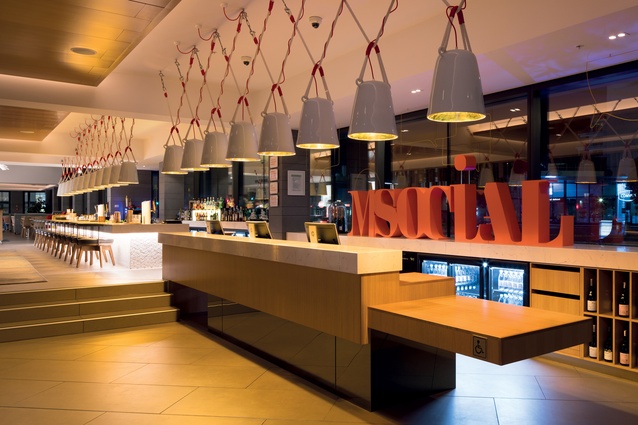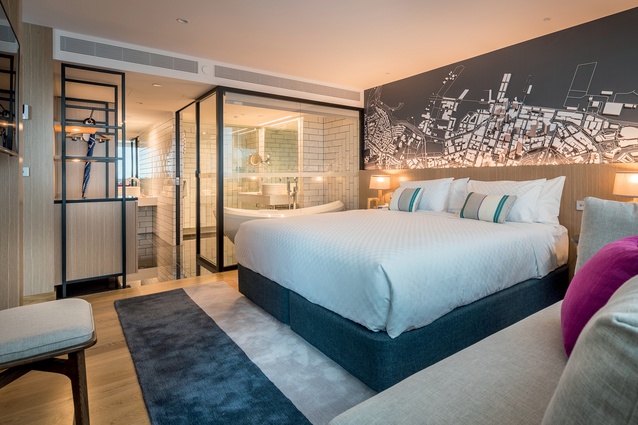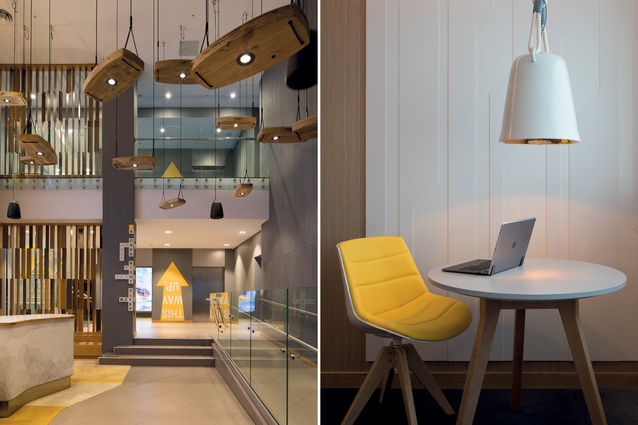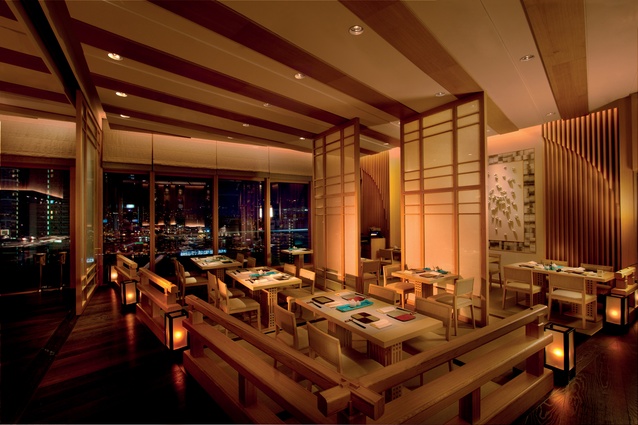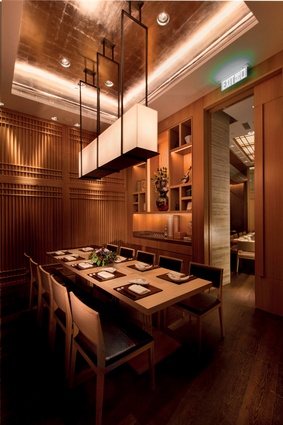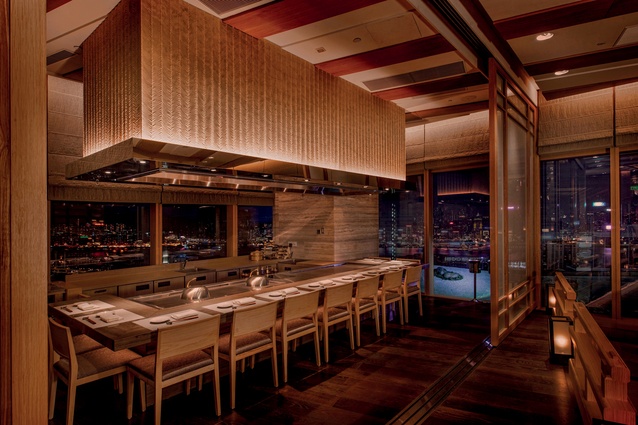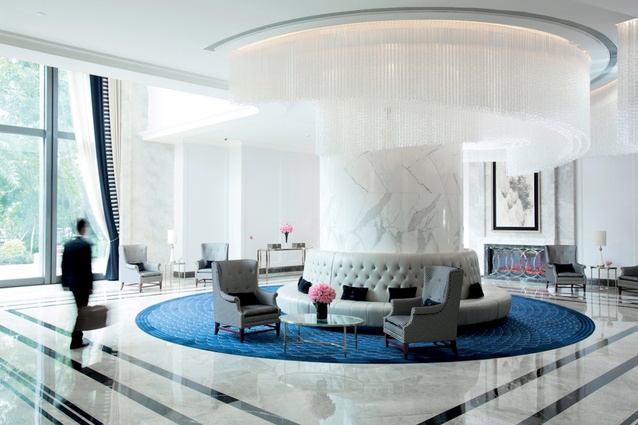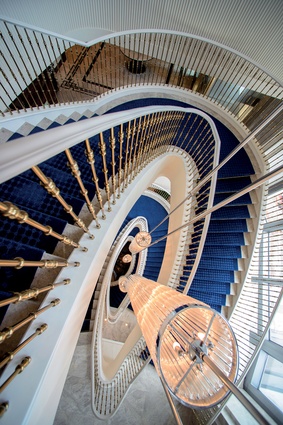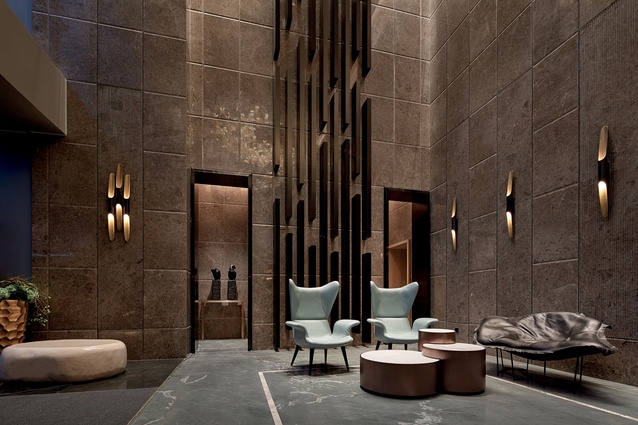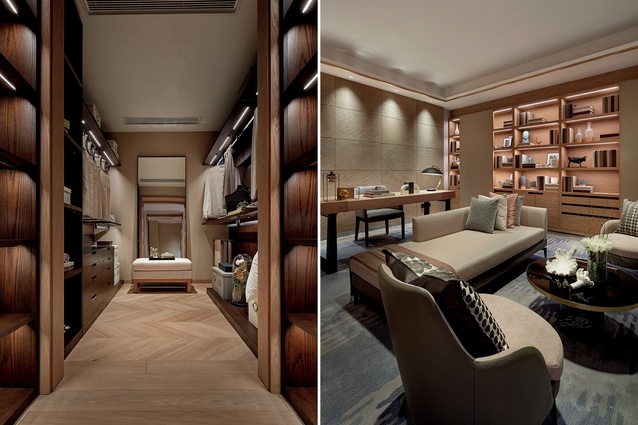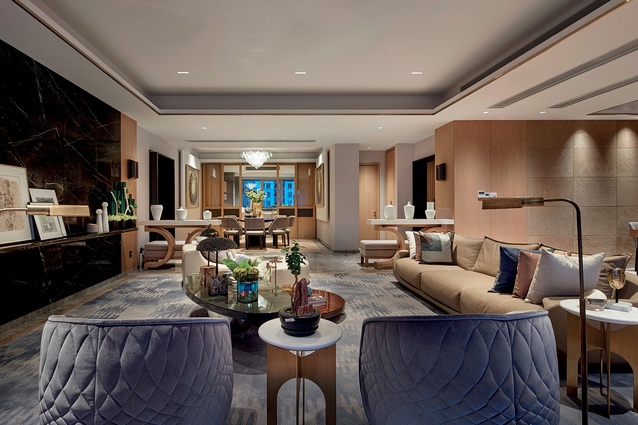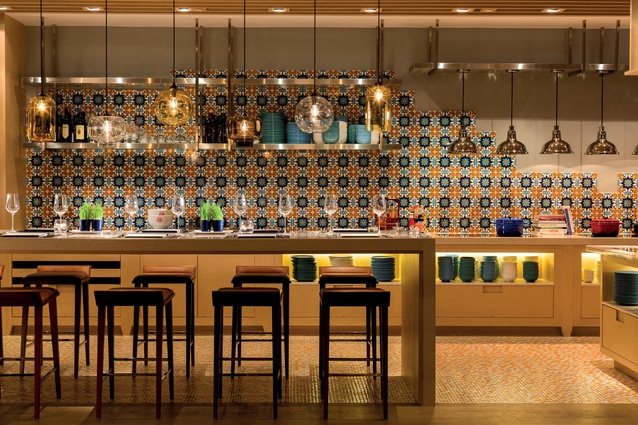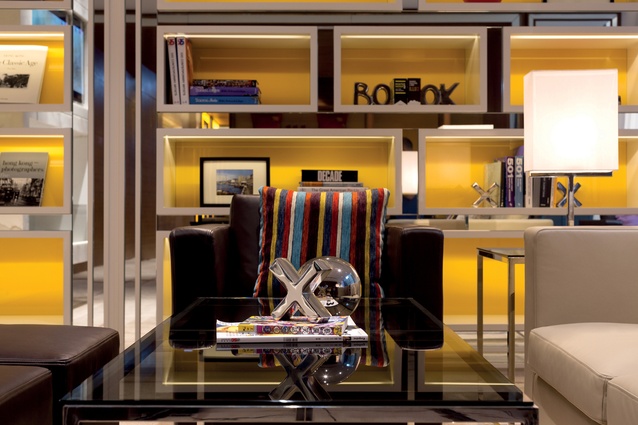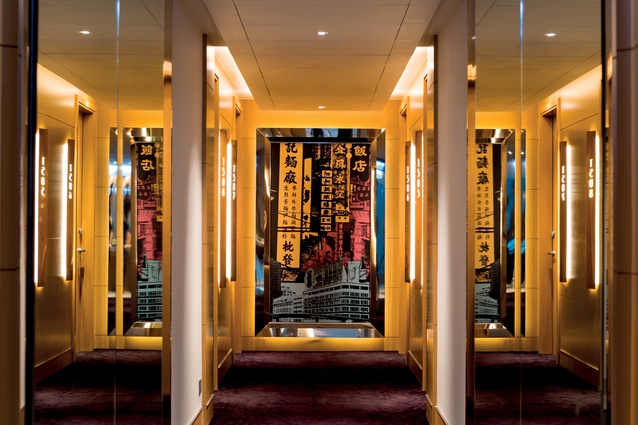Telling the story: Greg Farrell
New Zealand interior designer Greg Farrell is the Hong Kong executive director of multinational firm Aedas. Federico Monsalve caught up with Farrell during his visit to Aedas’ latest Auckland project, M Social.
Federico Monsalve (FM): A lot of your experience has been in Asia but you studied here in New Zealand.
Greg Farrell (GF): Yes, I grew up here and started my design career here in commercial design. Since then, I have spent much of the past 28 years overseas, with the last 12 years in Asia. I also spent 12 years in Australia, and a bit of time here and in London, so it’s been a very global thing. And we have projects all over the world so I have the opportunity to be seeing what’s happening in different markets.
FM: What does your role entail?
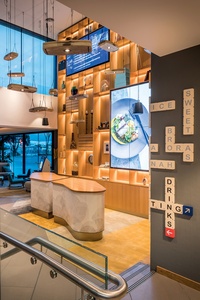
GF: My primary focus is hotel, F&B and residential design based out of Hong Kong, with more time spent on design direction these days, as opposed to hands-on designing. It’s a little bit like being the conductor of a fine orchestra. I often say when I meet clients that, whilst I’m the guy that does the presentations, there’s an amazing team behind me, and it’s the young talent within the studio that is creating many of the great ideas.
FM: Tell us about the process.
GF: A good example of the way in which we work in our studio is, when a new project comes in, we send out an email saying: “This is a project, come to a briefing session”.
Certain designers will come and I’ll give a briefing of what we’ve received from the client and what the aspirations are. We give them 24–48 hours and they go away. Everyone comes back and we do this sort of design, internal design sheet charrette within our own studio… and we get strands and storylines… because, for us, it’s all about creating that story and that narrative.
We then condense that down and go back to the client; typically, the concepts we go back to our clients with in the early days are narratives and stories that have come about through a great collaboration within our studio.
FM: Do you work across the various Aedas worldwide offices or purely from Hong Kong?
GF: I’m lucky enough to work with many of our global offices. Each one has its own directors and we occasionally work and collaborate on selected projects. Singapore’s a good example – we’ve just finished a restaurant project down there, at Marina Bay Sands. They had the opportunity on the project and we believed the best solution to meet the client’s requirements was to offer the experience of a combined team. So, we did the design in Hong Kong and they delivered it in Singapore. It’s similar with selected projects we do in London and the Middle East.
FM: That must present a lot of challenges, especially if you want to infuse a bit of local context within each of your projects.
GF: Yes, definitely. One of the key things about hotel businesses design is ‘a sense of place’. There’s nothing worse than getting on an aeroplane, travelling for 10 hours and finding yourself in a hotel that doesn’t reflect the local culture. So, infusing that local context is really important. Designing for the local communities is also really important. So, my team in Hong Kong is very international. We tend to do a lot of research on the cultures and then try to source as locally as we possibly can.
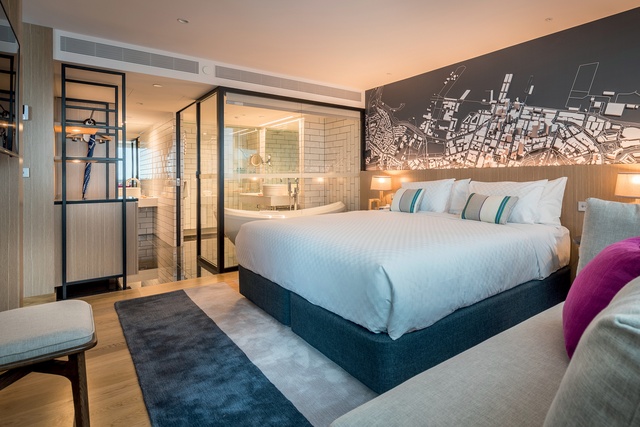
FM: In which other ways is culture infused in the interior?
GF: As an example, for a project we’re doing in Suzhou in China, the team dug into its research and found that Suzhou is full of scholarly, university-type places. There was a script and a dialect that had been created by the scholars of Suzhou. So, part of the storyline we’ve created within that has been to reintroduce that, as part of the signage and the ‘signalling’ throughout the place. The other part of that project is that Suzhou is all about gardens so a lot of our story and narrative is about the gardens.
FM: You do have to maintain a sense of brand within each of those spaces as well. Does the multinational branding clash with the idea of ‘local’ sometimes?
GF: I think the biggest brand DNA still comes in the hotel staff and the way in which they operate. What we do is we create the stage sets. It’s their stage set, you know. You have actors and you have the audience, and the actors are rehearsed and they’re impromptu; so, as staff, that’s where that brand messaging comes through. Obviously, you also have the collateral and other forms of brand messaging as well.
But really, infusing the brand DNA comes in very subtle ways. There are guidelines on how big the rooms should be and the things that are within the rooms but, then, it’s about telling the local story and that context.
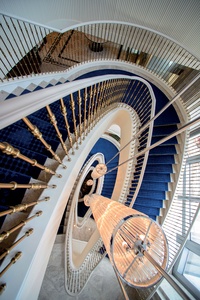
FM: What’s the main difference between designing for a place in Australia, New Zealand or London and designing for Asia?
GF: Asia, obviously, has seen phenomenal growth, particularly in China, in the way in which it’s opening up for travel. So, building hotels there has been an incredible experience. You can think completely outside the box for what you want to build there and, believe it or not, you can get it built. It’s relatively cost-effective and the quality is certainly starting to improve.
Also, the size of properties is much larger and they tend to be new builds. So, you’re a bit freer with being able to plan how you design buildings and properties in Asia.
Europe’s interesting because, of course, again, it is about size and a lot of the time you’re dealing with existing buildings. Hotel rooms tend to be a lot smaller so you have to be really smart about how you plan and design rooms in Europe. And the business models are slightly different because they’re looking at being far more compact.
Australia and New Zealand I find interesting because they’re still quite ‘Australia and New Zealand-centric’ in a lot of ways. They’re very focused on the local market and rightfully so. Probably their numbers are that way, with the demographics of people who are coming into that property.
It’s important as designers to try and understand those markets. The Middle East is another entirely different one. It’s changed. In the early days, you’d just be asked by an owner to build a hotel and you’d start to ask about budgets and nobody would talk about budgets. You’d just start building things. Now, there’s more reality coming into it and people really are considering business models. And I think that’s a core fundamental. When you start with a design, when you start with a project, you really have to come back to the fundamentals of the business model.
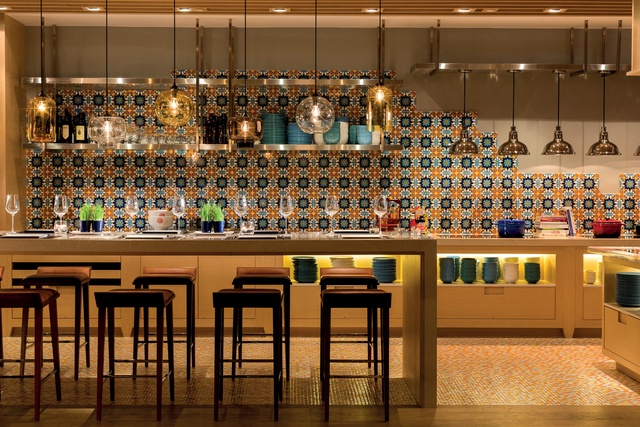
FM: Have things like environmentalism and sustainability changed throughout the years? Is that something that you as a designer can bring to the table?
GF: Absolutely. Some owners are very interested in going down that line. Some back away a little once they start to work out the costs of doing something that’s environmentally conscious because there’s still a cost premium for that. So, it does sometimes have an influence. But we look at materiality, the choice of where materials are coming from. We’re looking at recyclable materials – fabrics, for example, that are made from recycled plastics so we’re mindful of that. Also, we’re trying to source product that’s closer to the place of origin.
I think environmental design is as much our responsibility as it is the owner’s. I think governments also need to be stepping up because owners will shy away from it if it’s not regulation. China, for example, is very strong on environmental issues and they have quite a good sort of green ‘message’ within China that they’re trying to implement.
FM: Does someone like yourself working in such a large firm have a design signature or is it mostly client-driven?
GF: Recently, I’ve looked back and discovered that we have developed a style over time. Ultimately, however, I believe it is not as much about our signature as it is about understanding our clients’ aspirations and creating memorable environments for the end-user – the guest. Where I think we have our signatures is in things like planning – the ways in which we plan rooms – we’re always looking at open-style bathrooms. We take planning approaches a little bit differently. So, that’s possibly one of the signatures we have as a group.
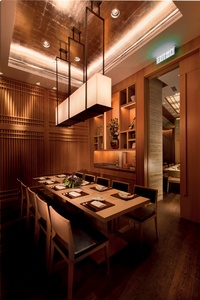
FM: Do you see anything in the future happening in your industry? If you had to foretell what was going to happen in hotel design, is there a big picture that you see coming up? Is there anything major changing?
GF: Man, if I knew that… [Among other things] I think that we’re able to think differently about the way that we design with materials and the way that the components go together. That then comes into the speed at which we’re building projects and how we’re building them. As you start to have different ways of constructing and putting materials together, you will look to build in different ways.
FM: Like with prefabrication?
GF: Correct. There are pod hotels that are being created now. They’re not new – when we built for the Millennium in Queenstown back in the mid-’90s, for example, it was all pre-made slab floors, tilt-slab walls, pod bathrooms. That hotel was built in a short period of time and it was all about speed to market. I think it’s one of the things I’m seeing an awful lot of as well – the speed to market. Our design times are decreasing and owners’ expectations and aspirations about getting products to market are on much shorter time frames.
FM: That puts a lot of pressure not just on the design team but on the construction team as well, to deliver properly and learn all these new techniques about constructing with prefabricated materials.
GF: Absolutely… and I have some interesting ideas and concepts about prefab and pre-made for renovation – there are potentially some opportunities there. We did a room in London recently where, from signing the design off and rendering the visual, it was all pre-made, pre-constructed in China, put into London, constructed and put into the room. We sat down and reviewed the room and it was seven weeks. So, if that’s an indication of one of the ways in which the industry is changing, speed to market is certainly something that’s going to be there.
But you still need to maintain certain time periods and processes to be able to achieve a certain quality. And there’s going to be a point where we start to come to a breaking point – a threshold – where you just can’t do it any more quickly without really starting to compromise the end result.

